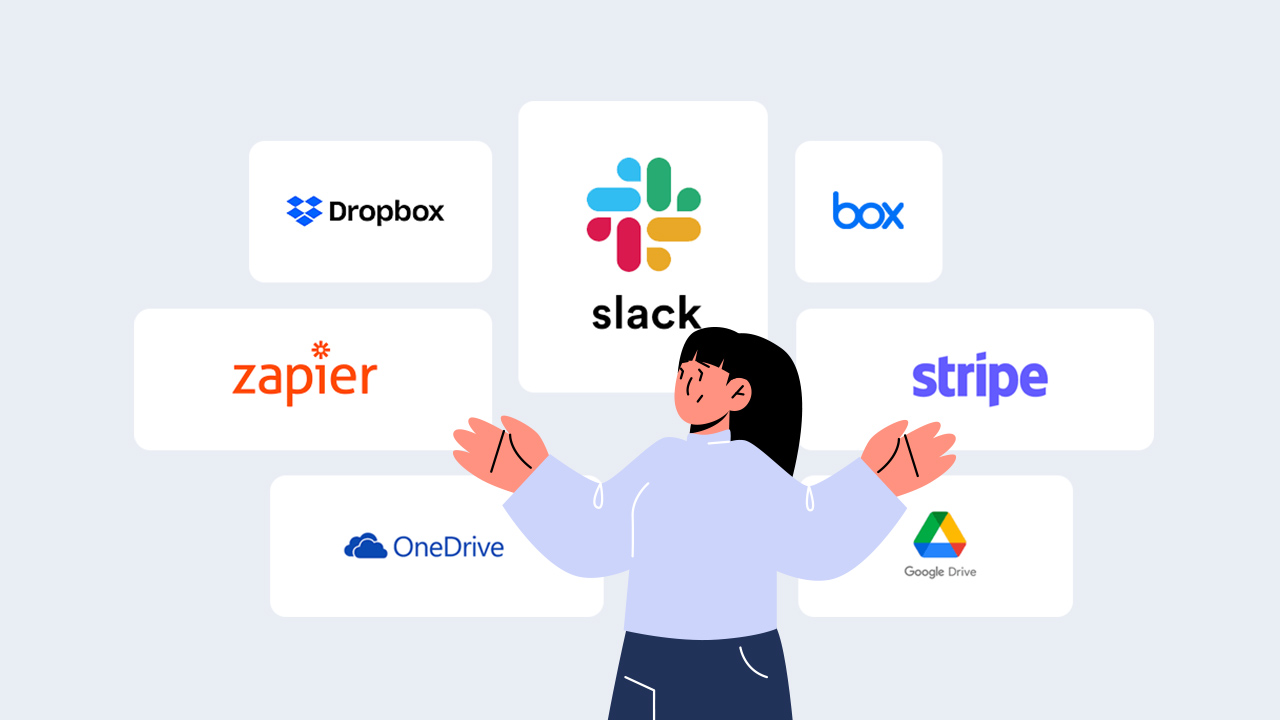
The impact of system integration is totally underrated.
From a normal perspective, people don’t usually see the wonders of system integration—the benefits are endless, but its recognition is silent. With system integration, companies are saving tons of money, improving company workflows, boosting productivity, and more. Because of the continuous advancement of the internet and technology, system integration doesn’t only involve computer systems, but also your online PDF forms—yes, your PDF online forms can now also benefit from the numerous advantages of app integration.
In this article, we will focus on the advantages of form integration, and how you can upgrade your PDF forms online here in PlatoForms by connecting them with apps.
Table of Contents
1. What is system integration?
2. Why is system integration important?
4. The downsides of online forms without app integration
What is system integration?
System integration plays an important part within companies because they facilitate communications between different types of software applications that don’t usually talk to each other. So, what exactly is system integration?
It’s important to integrate multiple systems into one system because then they can be used efficiently for maximum effectiveness. Its main purpose is to help companies communicate better with each other through reduced impacts from changes made within one system affecting another.
Why is system integration important?
Consistent process
System Integration enables the automatic transfer of consistent information from one system to another. For example, if an eCommerce site receives a notification that a user has added items to their cart, then the order fulfillment software must automatically send out shipping notifications. By integrating both systems into one, we’re able to mitigate some of the issues associated with having two separate systems.
Innovated system
Integration of systems and data across different departments and organizations helps companies innovate and create better products and services. For example, by integrating internal company databases into an external customer relationship management (CRM) system, companies gain insight into their customers’ needs and preferences. By doing so, they’re able to develop new offerings tailored specifically to these needs and preferences. As an example, when buying something from Amazon, if someone wants to buy a book but doesn’t know whether there is any available at their local store, they could use an online system to check inventory availability before making the final decision. Transparency helps create trust between people and their interactions with technology. It shows that the integration of systems into products isn’t just an afterthought but rather something integral to building value for both parties involved.
Thanks to the integration between different parts of the organization, it allows them to be able to operate not just independently, but at the same time, efficiently. It helps facilitate an incremental construction approach based upon abstractions and reusability, which enables the appropriate modeling of the overall application architecture within the organizational context.
Improved data analysis
With efficient system integration, you won’t need any third-party tool to analyze your data. You can use any number of tools for analyzing different aspects of your business. A holistic approach to analyzing user behavior gives them an easy way to understand their own habits and preferences. It helps you to compare things by seeing them side-by-side, which frees up time so that you can focus on other important matters.
However, what is app integration?
App integration is not entirely different from system integration. According to Gartner’s glossary, the definition of application integration is the process of letting two different applications work together. With app integration, its data is kept separated and independent, that though different, they still manage to work seamlessly. App integration allows us to see what appears to be a single-action feature, where in reality it’s two different roles being combined together. A common example would be our form integration–your PDF forms online with PlatoForms can integrate with different cloud storage apps, allowing you to not manually transfer forms anymore.
The downsides of PDF forms online without app integration
A PDF software that can do wonders such as converting PDFs to web forms, making PDF fillable online, or turning PDF into fillable form is great–however, it can be incomplete without form integration. Without form integration, it will be difficult to improve your business workflow. Some of the cons of online PDF software without integration are:
Manual input
Without an app integration, your PDF forms online will be manually uploaded to your cloud drive. This can take too much time and effort.
It might be difficult to keep track
Form integration notifies you if someone submits a form! Although you can always track your form submissions on the PlatoForms website, it will be more convenient to be notified for submissions in real-time.
Lack of automation
API and form integration makes the lives of businesses easier by automating tasks. Form integration, with the help of our restful API, enables you to achieve more productivity including submitting, monitoring, and downloading online forms.
Lack of data security
Using cloud drive storage promotes safety for your most sensitive and confidential documents. Online storage is saved from inevitable disasters and human errors that can occur anytime.
The advantages of online form integration
Documents on the go
Gone are the days when you had to carry tons of documents every day. With the rise of cloud storage apps, making your documents on the go has never been easy before. The good thing? You can now integrate your online PDF forms into your preferred cloud storage.
Types of cloud drive apps that you can use with PlatoForms:

- Google Drive: You’ve been a Google Drive user for ages–and you finally signed up to PlatoForms to convert your PDFs to online forms, turn PDFs into online forms, or allow your customer to complete PDF forms online. It would be tedious to manually upload your forms from Google Drive to PlatoForms–thanks to form integration, you can just connect your PlatoForms account and save your PDFs to Google Drive. The best thing–over 15GB of storage for free!
- Dropbox: From photos to documents, Dropbox offers SSL encryption and two-step verification for the security of your documents. Additionally, it provides 2GB for free.
- Microsoft OneDrive: Also offering free 15GB storage, OneDrive has been commonly used for businesses and companies because of its addition to Office Online. Microsoft email (Outlook and Hotmail) users already have OneDrive aside from Office Online.
- Box: Commonly mistaken for DropBox, Box provides an online syncing tool and additional security features for storage. This includes role-based access to documents, read-only users mode, and password-secured storage for added safety. Because of its many layers of security, B2B companies mostly use Box for data storage.
Easy payment collection
Whether you’re using Slack or Stripe, app integration will enable you to collect payments from these apps conveniently.
Read also: Announcing Stripe Integration: Accept Payment via Stripe With PlatoForms
Connect with thousands of apps
Zapier, the most popular app for web app integration, can also be integrated with PlatoForms. You can send your PDF Online Forms freely to your app of choice–all data is automated for convenience.
Upgrade your online PDF form experience with PlatoForms’ app integration
Take note: To integrate with your on-premise system, try to use our restful API.
- Cloud Drive: Have your online PDF forms automatically uploaded to your favorite cloud storage! To start, you can click “Cloud Drive” and turn on the enable option. There would be instructions provided for you to link your cloud drive account to PlatoForms. Customize the subfolder with any name you prefer, then click save.
- Slack: Connect your PDF Online Forms to Slack workspace and see its status via the channel, or even a direct message. With this feature, you can be notified instantly every time somebody submits a completed form to you. To start, go to your form and click “Integrate”. Select the “Add to Slack” button and grant permissions for PlatoForms. The good thing about Slack integration is it’s not just limited to one Workspace–you can connect to multiple ones! You can do this in the “Slack Workspaces” drop-down list. From the “Send message to” list, you can pick a channel that should start with ‘#’, or a direct message starting with ‘@’. You can add 2 buttons (optional) that can download the created PDF or open the form page to edit the submitted form. With this feature, you can keep track of your form when you receive submissions.
- Stripe: Connect with Stripe to accept payments from your online forms easily! To start, click the “integration” menu on the form. Connect it through “Test Mode” (To test if the payment is working or not) and “Live Mode” to accept valid payments. The best thing? PlatoForms won’t collect any additional charge!
- Zapier: You can instantly connect to over 3,000+ apps now with Zapier! For every successful submission of your forms, PlatoForms will create an afferent PDF and will trigger a Zapier flow (Zap). We provided detailed instructions in our documentation for Zapier integration.
Have any questions on how to convert your PDF forms online or form integration? Shoot us a message for any questions and assistance with your online forms!




